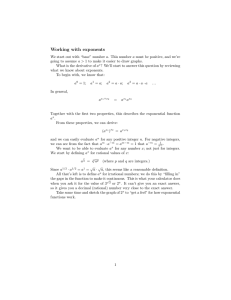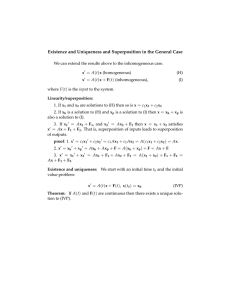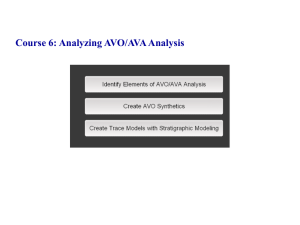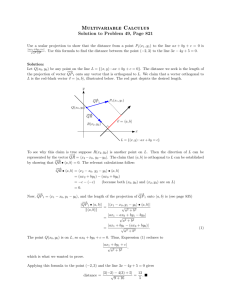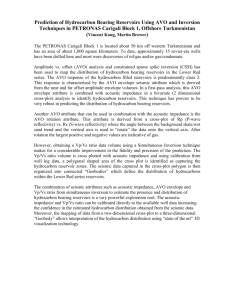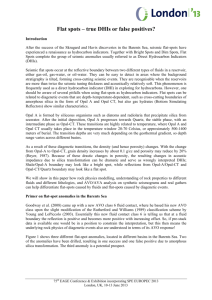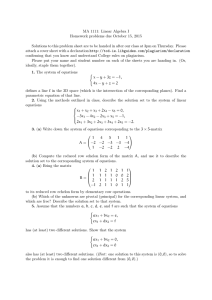AVO`s - Aboriginal Legal Service (NSW/ACT)
advertisement
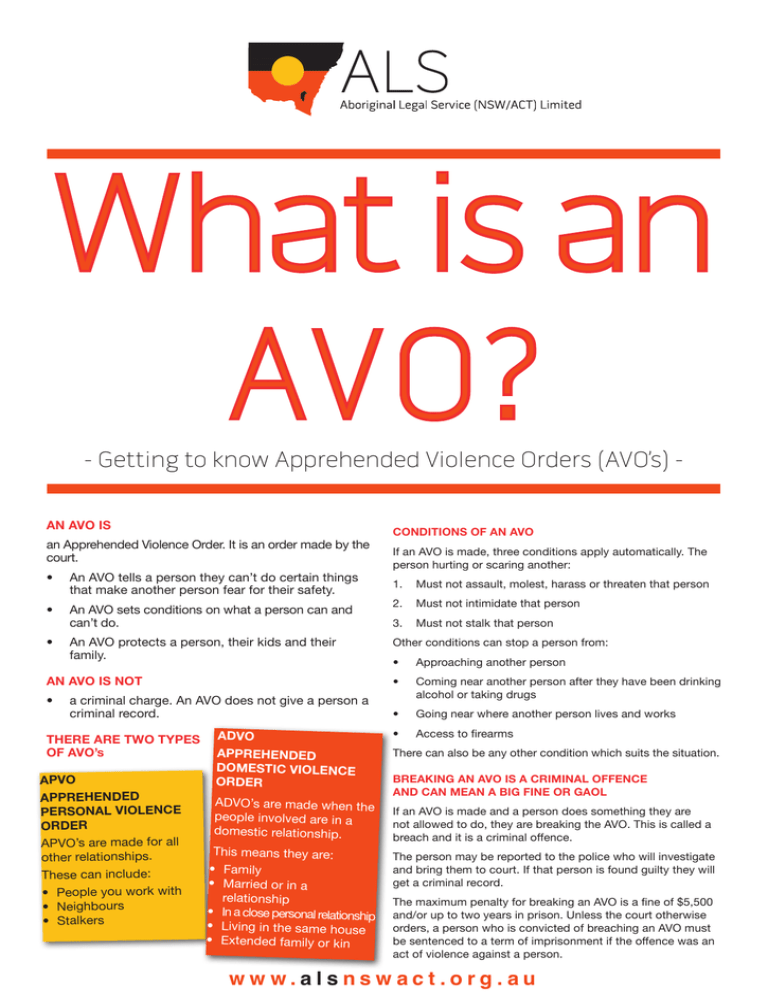
What is an AVO? - Getting to know Apprehended Violence Orders (AVO’s) AN AVO IS an Apprehended Violence Order. It is an order made by the court. • An AVO tells a person they can’t do certain things that make another person fear for their safety. • An AVO sets conditions on what a person can and can’t do. • An AVO protects a person, their kids and their family. AN AVO IS NOT • a criminal charge. An AVO does not give a person a criminal record. THERE ARE TWO TYPES OF AVO’s APVO APPREHENDED PERSONAL VIOLENCE ORDER APVO’s are made for all other relationships. These can include: • People you work with • Neighbours • Stalkers ADVO APPREHENDED DOMESTIC VIOLENCE ORDER ADVO’s are made when the people involved are in a domestic relationship. This means they are: • Family • Married or in a relationship • In a close personal relationship • Living in the same house • Extended family or kin CONDITIONS OF AN AVO If an AVO is made, three conditions apply automatically. The person hurting or scaring another: 1. Must not assault, molest, harass or threaten that person 2. Must not intimidate that person 3. Must not stalk that person Other conditions can stop a person from: • Approaching another person • Coming near another person after they have been drinking alcohol or taking drugs • Going near where another person lives and works • Access to firearms There can also be any other condition which suits the situation. BREAKING AN AVO IS A CRIMINAL OFFENCE AND CAN MEAN A BIG FINE OR GAOL If an AVO is made and a person does something they are not allowed to do, they are breaking the AVO. This is called a breach and it is a criminal offence. The person may be reported to the police who will investigate and bring them to court. If that person is found guilty they will get a criminal record. The maximum penalty for breaking an AVO is a fine of $5,500 and/or up to two years in prison. Unless the court otherwise orders, a person who is convicted of breaching an AVO must be sentenced to a term of imprisonment if the offence was an act of violence against a person. www.alsnswact.org.au How is an AVO made? APPLY The person who is scared and in need of protection can apply for an AVO. The application for an AVO can be made by (1) going to the the Local Court and asking for help OR (2) by the Police. The Police will usually make an AVO application when they attend a domestic violence incident. Only the Police can apply for an AVO if the person in need of protection is under 16 years of age (at the time of the application). The Police or the person in nee d of protection can also apply for an Interim (temporary) AVO which will protect them until the next cou rt date or until the final AVO is in place. The Police can apply for a Provisional AVO if they believe someone needs immediate protection. A provisional AVO only lasts for 28 days. GO TO COURT (MENTION) The next step is going to court. In court, the person in need of protection is called the Complainant. The person having the AVO made against them is called the Defendant. Both people will need to go to court. AGREE DO NOT AGREE An AVO will be made if the Defendant (the person having the AVO taken out against them) agrees to the AVO. The parties can discuss and then agree on what conditions should be in the AVO. The final AVO is in place. If the Defendant (the person having the AVO taken out against them) does not agree to the AVO, both people will have to return to court another day for a hearing. GO TO COURT (HEARING) Every Aboriginal man, woman and child has the right to feel safe. An AVO can help a person feel safe if there is another person being violent towards them, or harrassing, intimidating or stalking them. Both people will need to be at court for the hearing. An AVO will be made if the court is satisfied the person in need of protection (the Complainant) fears the Defendant will be EITHER violent towards them, or will harass, intimidate or stalk them AND that the fear is reasonable. This means that any person in the Complainant’s position would feel the same way. If the court is satisfied of this, the final AVO is in place.
